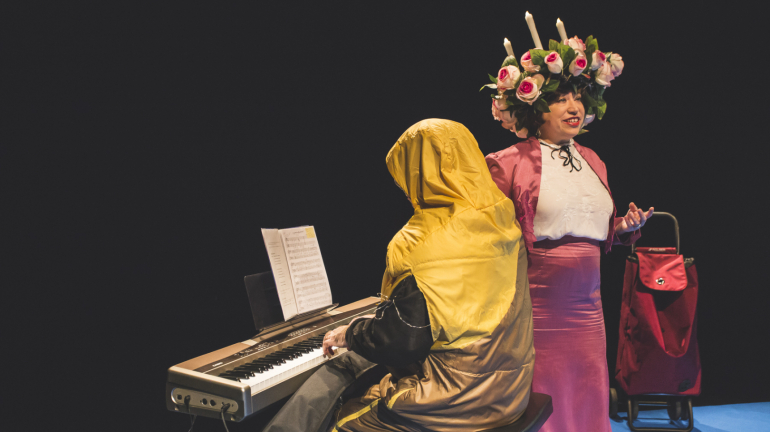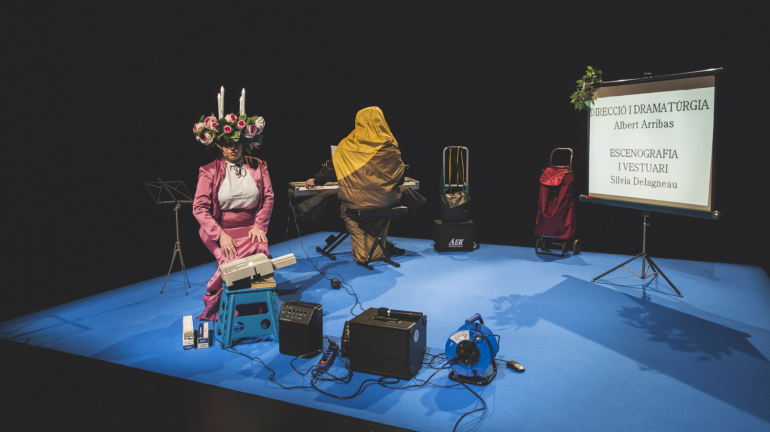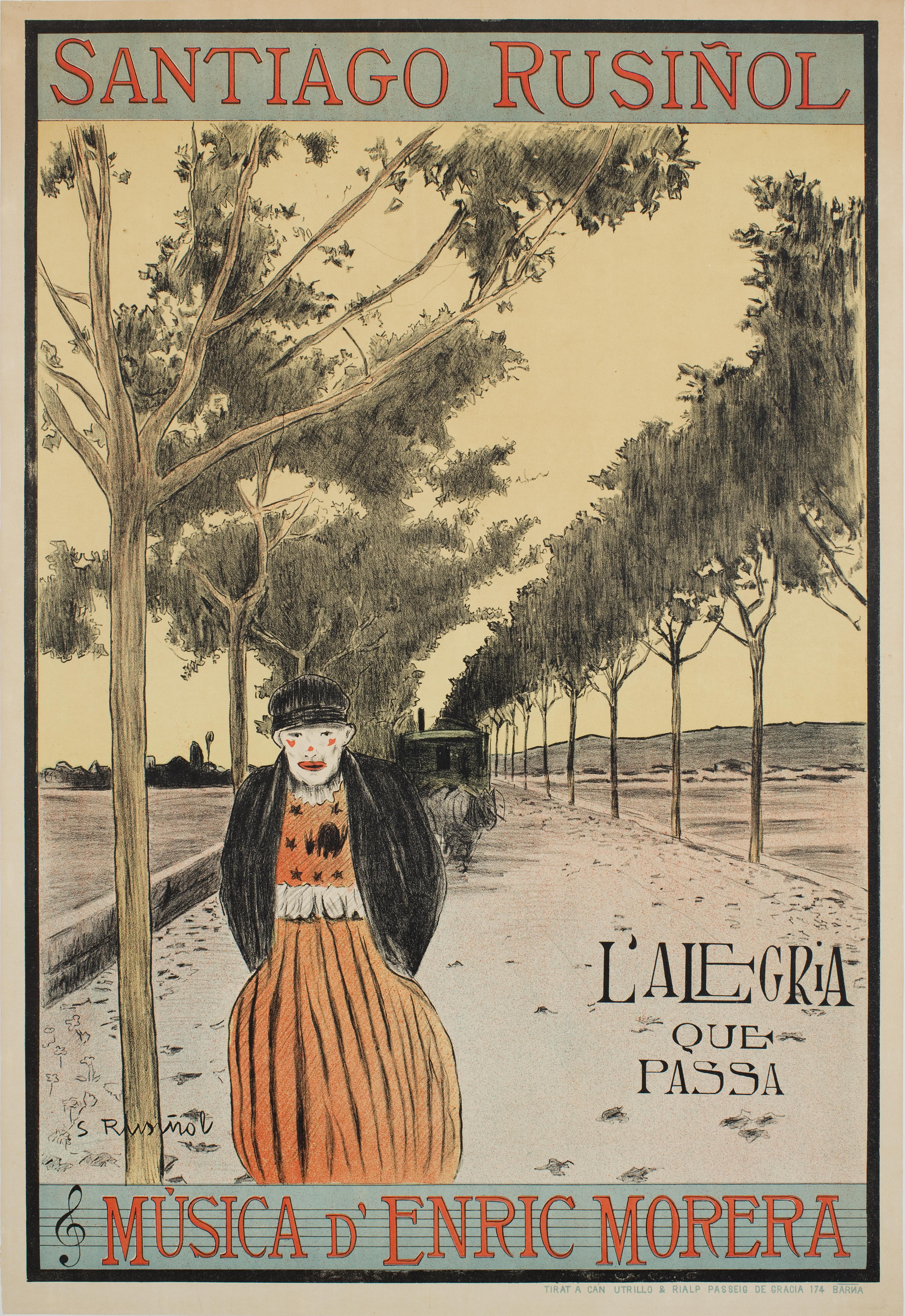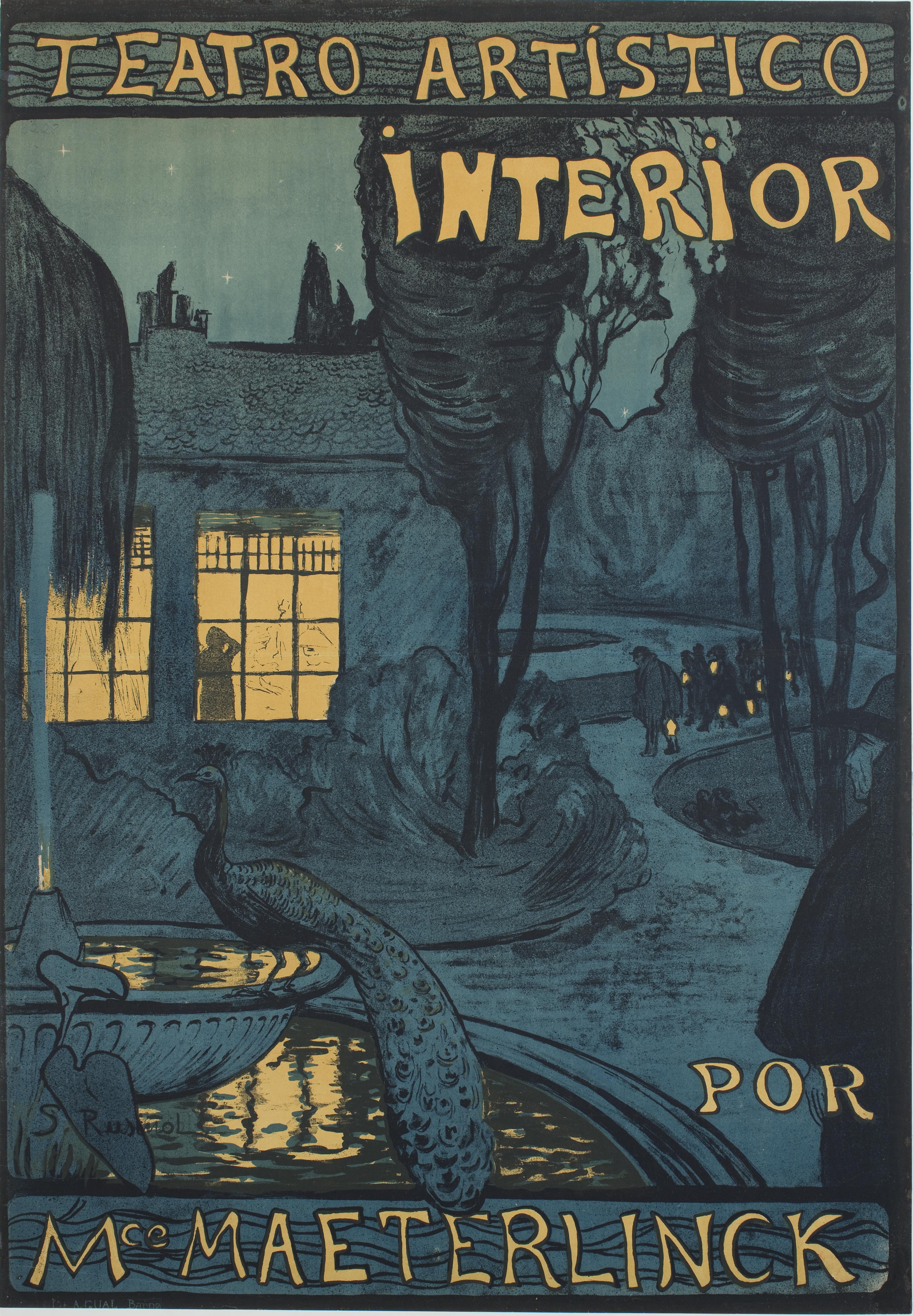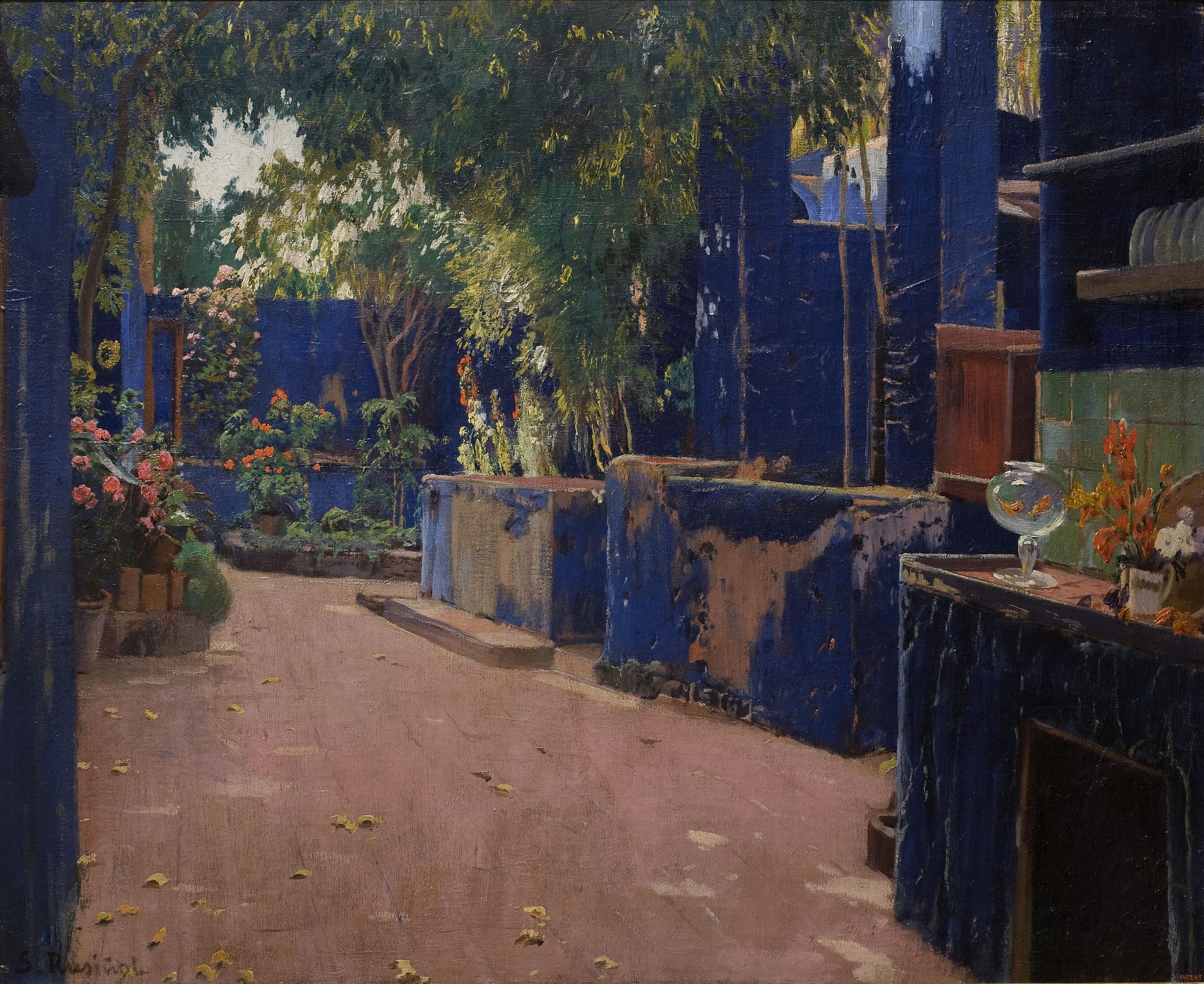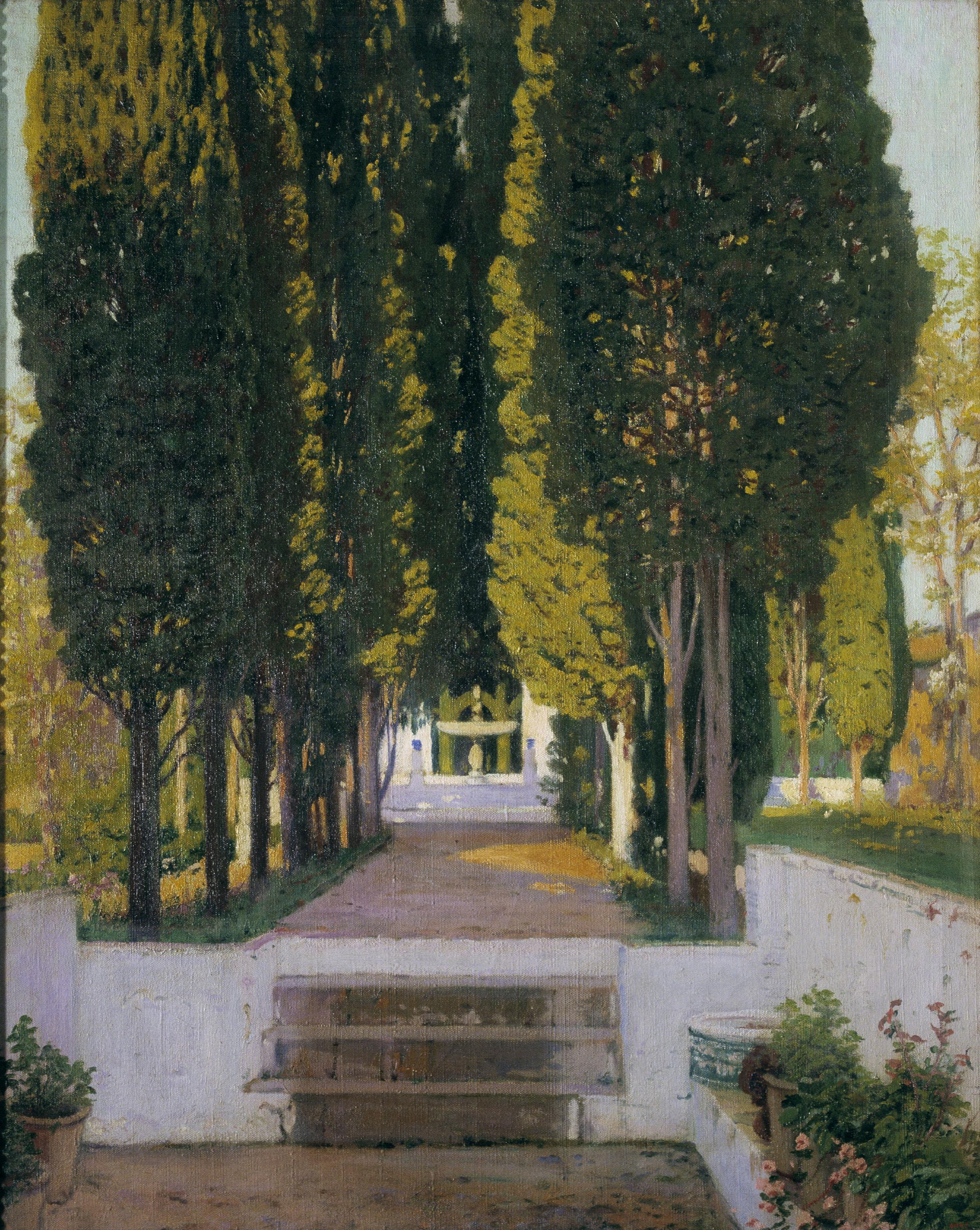Eduard Vallès
The museum of the future, and of the present too, must go beyond its own walls and disciplines on a basis of institutional collaboration, a role that the Museu Nacional has internalized for years.
The collaboration between the museum and the Teatre Nacional de Catalunya (TNC)
This year, 2018, has witnessed the first collaboration between the two bodies; they have historically functioned in quite different registers and parameters, but the circumstances and one person in particular have placed them at an intriguing intersection. This person is the painter, writer, playwright and collector Santiago Rusiñol. No one is more suitable for initiating this collaboration, because not only was Rusiñol an artist and playwright, but the work he produced as both was worthy of the highest honours. These days, a time of specialization, it would be unthinkable for anyone to emerge – or rather, be allowed to emerge – who was at one and the same time a very important figure in the theatre and in the plastic arts.
The starting point for this collaboration has been this year’s autumn programme at the TNC, featuring Rusiñol, with the staging of two of his most outstanding pieces: Els jocs florals de Canprosa (The Canprosa Poetry Contest) and La niña gorda (The Fat Girl).
Rusiñol and the meaning of modernity
The reason is that not only is Rusiñol one of the artists most and best represented in our collections, but his role goes beyond the strictly artistic: Rusiñol is, along with Ramon Casas, the great pioneer of Catalan art’s access to modernity during one of its most brilliant periods, the late 19th and early 20th centuries.
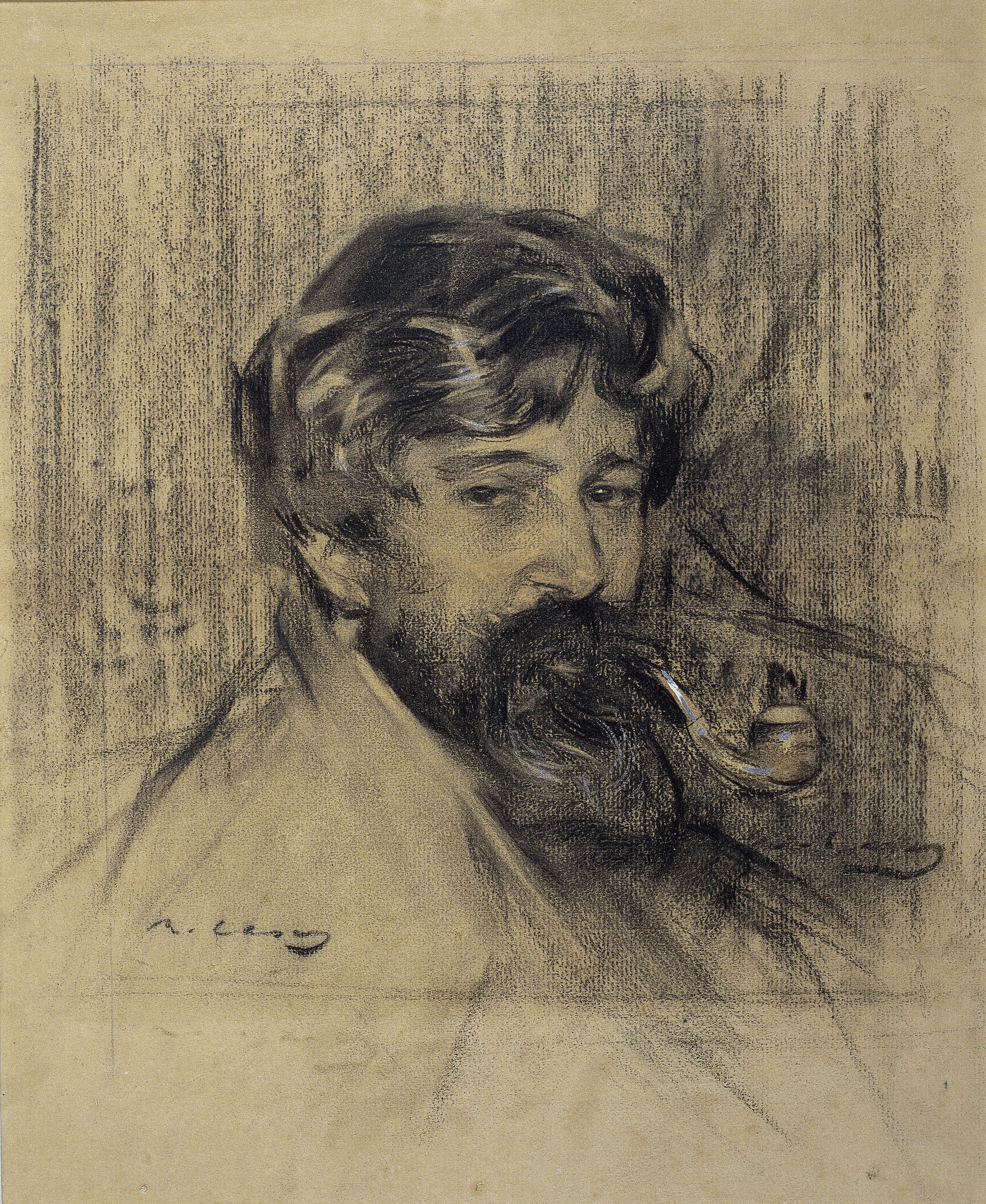
Ramon Casas, Portrait of Santiago Rusiñol, around 1900
Along with Casas, he moved to the Paris of the pioneers, and for a while he even lived in the Moulin de la Galette building itself. The journalistic articles that Rusiñol sent back from Paris, illustrated by Casas, are the testimony of an artist who not only imported the modern art of his time, but who verbalized it through his texts, in which he combined diary writing with art criticism.
From the first decade of the 20th century onwards his figure, understood as modern, was gradually marginalized. His plays gradually lost their social commitment, and his painting shifted towards landscape art, gardens to be precise. Rusiñol moved out of the centre of gravity of the strict avant-garde, although he continued to enjoy the favour of the theatre-going public. Seen in perspective, Rusiñol is one of the few artists of Catalan art that on his own could tell the story of a period, and not just any old one, but one of the most brilliant. Even Eugeni d’Ors himself, ushering in the new times that would banish Rusiñol and the remains of Modernisme, highlighted what he represented in the book Fifty Years of Catalan Painting:
“It is difficult today, from a certain distance, to realize what the presence of that person one day signified in the art scene, and particularly in the social life of Catalonia. In many respects, and in his day, Santiago Rusiñol was, on the local scene, the innovator par excellence. For years and years, many young souls saw in him something resembling a symbol of idealism, doing battle with the vulgarity round about, and in his name, a kind of symbol of freedom and sincerity.”
Rusiñol en las salas del museo
And now Rusiñol the man of letters enters the museum thanks to the TNC, with the performance of a play inspired on one of his texts. We shall introduce the word to a stage where there are normally paintings, with all the challenges that working in a place somewhat different from ours represents.
The work chosen is Orationibus#SR, written by Albert Arribas, a piece inspired on the book Prayers by Santiago Rusiñol. Orationibus#SR is a contemporary interpretation of many of the problems that Rusiñol pointed out, such as the role of culture in society or the meaning of tradition. It is a minimalist show that combines lyricism, cabaret and performance, with fragments of Rusiñol’s lyrical musical plays, such as The Joy that Passes and The Abandoned Garden.
The museum, as well as hosting the performances, contributes to them with a small display of works by Rusiñol from its collections, more or less associated with the theatre, which artistically “illustrate” his theatrical side. It is designed as a complement for the spectators who come to see Orationibus#SR, and it can be seen in an adjoining room for a short while before the show begins. The works chosen are intended to be a synthesis of this by-pass between drama and art and all but two of them come from the museum’s storeroom. To accompany the visit a leaflet has been designed, to act as a reminder of this activity with a short text and the reproduction of the works on display.
Three posters have been chosen, a discipline that Rusiñol, unlike Casas who was its standard-bearer, never worked in. But it is surprising that, of the few posters that he did make, some are about the theatre. A couple stand out, The Joy That Happens and Interior. The Joy That Happens, a play by Rusiñol, was one of his great dramatic successes and it was warmly received in its day. The poster includes a couple of elements that define Rusiñol’s work: the Clown that represents Poetry – locked in eternal combat with Prose – and the two rows of trees towards the vanishing point. This image alludes to the famous iconography of Rusiñol’s “roads”, which he painted so much in oils and which are inspired by the Catalan landscape art of the second half of the 19th century.
He made Interior for the play of the same name by the Belgian playwright Maurice Maeterlinck. Blue, a colour that for Rusiñol was always much more than an expressive resource – a mood actually – monopolizes the poster.
The third poster is not by Rusiñol, but the critic and cultural activist Miquel Utrillo, and it was created for Rusiñol’s play Prayers. Utrillo poses one of Rusiñol’s decadent young classical women against a background landscape in which an arbour in the Generalife in Granada appears.
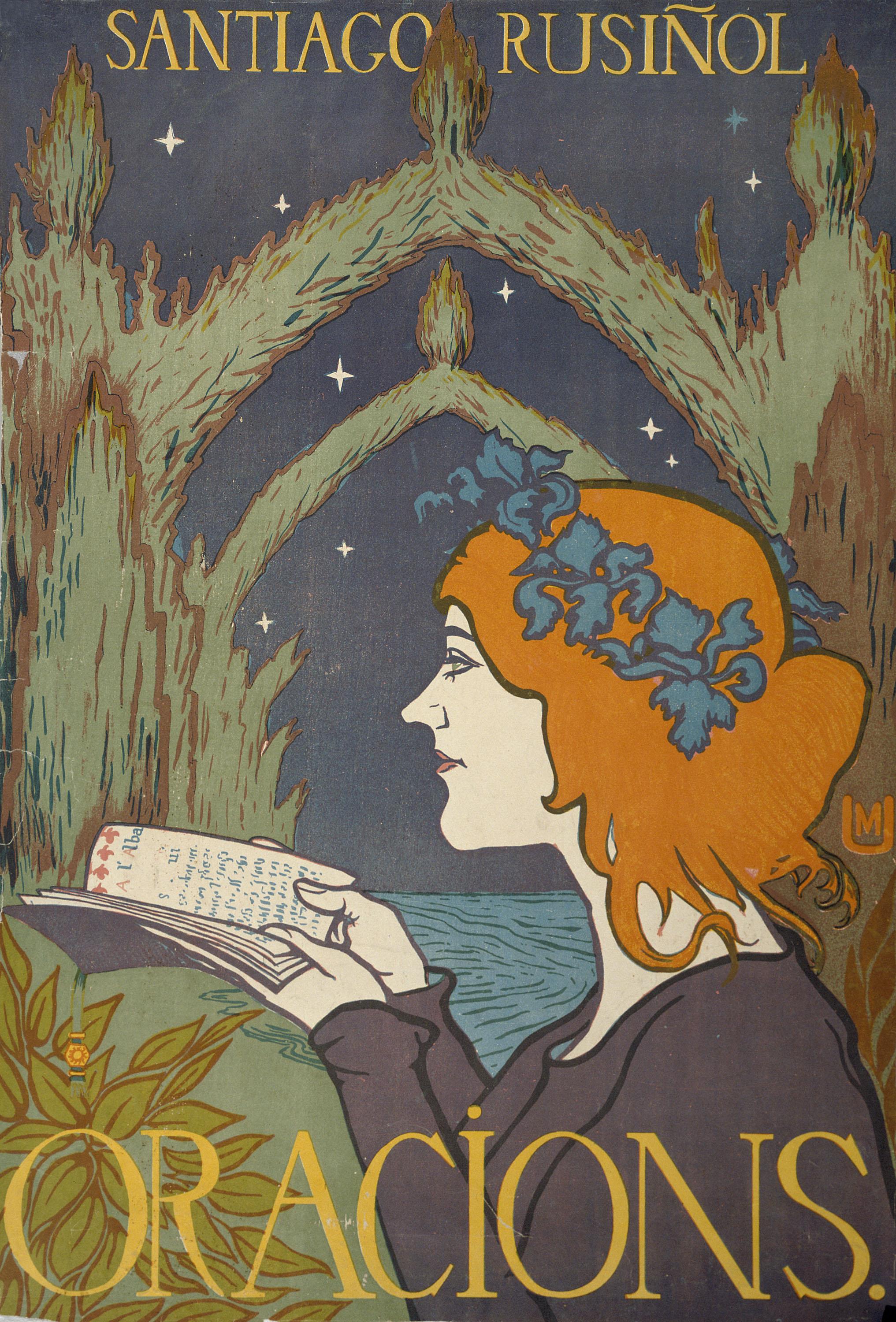
Miquel Utrillo, Prayers, 1897
Courtyards and gardens were to become ideal settings for Rusiñol’s literature, as the titles themselves tell us, for example The Blue Courtyard or The Abandoned Garden, in evident correlation with his painting work. In this small display we therefore include a courtyard, with its singular blueness, and an oil painting of the Generalife in Granada. The paintings are later than the plays, but they are core scenarios of Rusiñol’s creativity, above all because they were often an outward projection of the artist’s inner self.
The show will also include works by figures close to Rusiñol, besides the aforementioned Utrillo. For example, a Portrait of Santiago Rusiñol by Ramon Casas, or a satirical drawing by Picarol in which we see Rusiñol and Enric Borràs, one of the great actors of Catalan theatre, together.
But perhaps one of the most universal figures that Rusiñol had dealings with – and who would be associated with the theatre through his music – was Erik Satie. Rusiñol met him during his stay in Montmartre, when the musician was earning his living as best he could by playing the harmonium around the taverns. Rusiñol drew him in that period, playing the instrument and wearing a top hat. Some years later, by which time he was more successful, he immortalized him in the famous oil painting A Romance.
Como anécdota destaca la que explicó Màrius Verdaguer en su libro Medio siglo de vida íntima barcelonesa, que tiene por escenario la representación del ballet cubista Parade en el Liceu, en 1917, durante una gira de los Ballets Rusos de Serge Diaghilev. Este ballet sofisticado, con decorados y figurines de Picasso y música de Satie, no tuvo una gran recepción entre el público, pero Rusiñol, que estaba presente, no solo aplaudió con fervor, sino que lo hizo de pie sobre su butaca. A pesar de que en aquellas fechas Rusiñol ya había dejado de ser el moderno de los días de Montmartre, es evidente que todavía conservaba un moderno en su fuero interno, además de un gran respeto por sus amigos de los tiempos heroicos, Satie y Picasso.
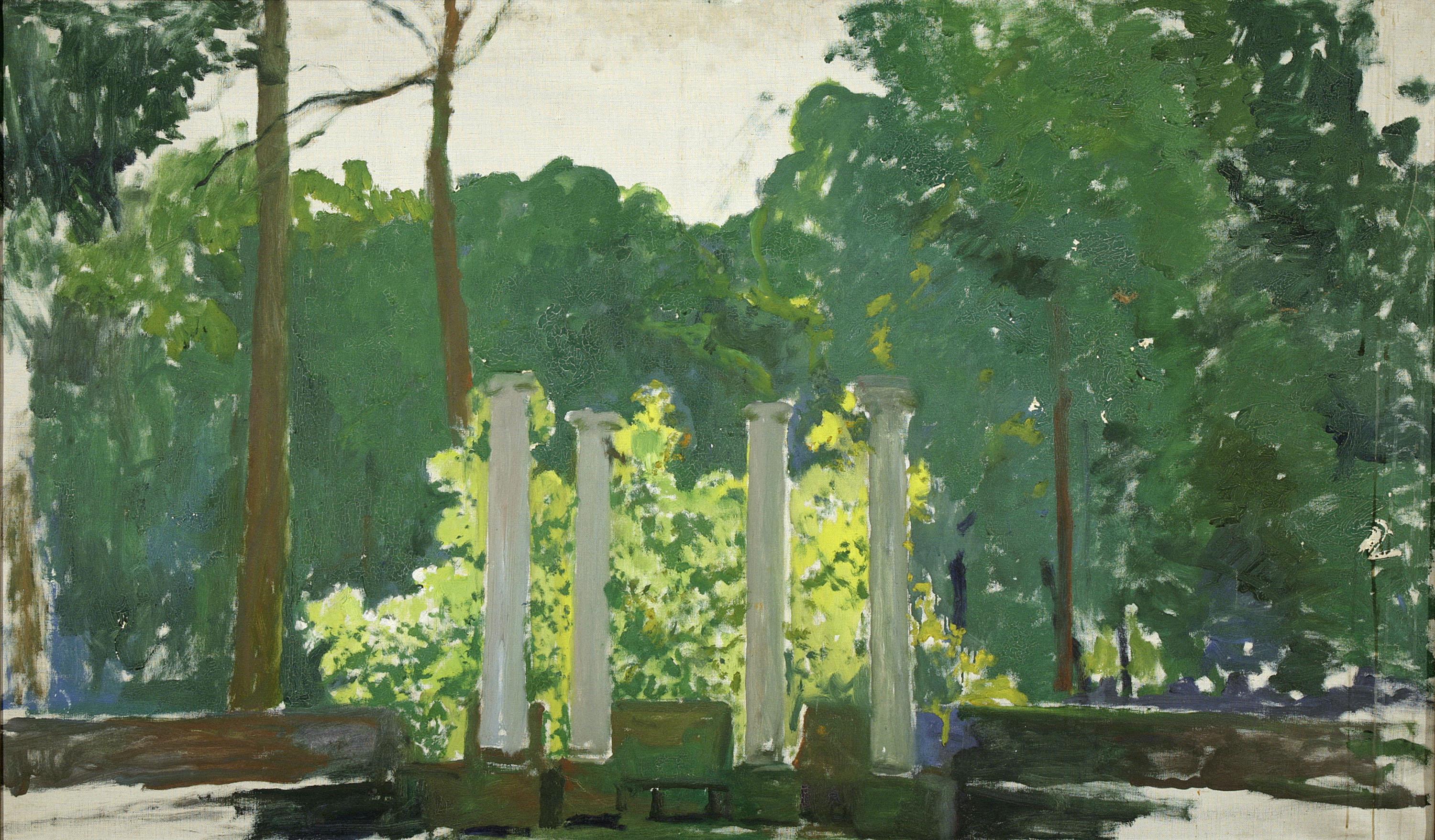
Santiago Rusiñol, Landscape. Aranjuez (unfinished work), 1931
Cierra esta muestra el último óleo pintado por Rusiñol durante sus últimos días en Aranjuez, que quedó inacabado. Es uno de sus jardines, pintado en 1931, que representa cuatro columnas en uno de los jardines de esta ciudad.
Esta obra cierra simbólicamente el telón de la vida y la obra de Rusiñol que, como en buena parte de los grandes artistas, se correlacionan entre sí. Vida y obra de Rusiñol han estado desde siempre al servicio de una causa mayor, la construcción del mito Rusiñol. Ese es el objetivo de esta combinación plasticoteatral que proponemos desde el Museu Nacional, un acercamiento combinado a uno de los artistas, sin duda, más relevantes e influyentes de toda la historia del arte catalán. Y tiene todo el sentido hacerlo de la mano del Teatre Nacional y de su equipo, con quienes hemos trabajado en magnífica sintonía.
Enlaces relacionados
Curiosities of the collection: modern art
New display of Modern Art, Museu Nacional d’Art de Catalunya
Art modern i contemporani

